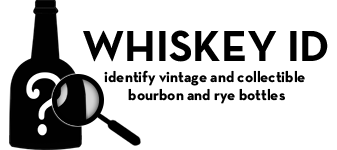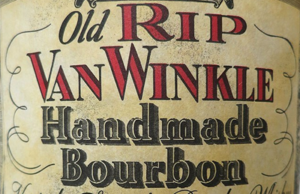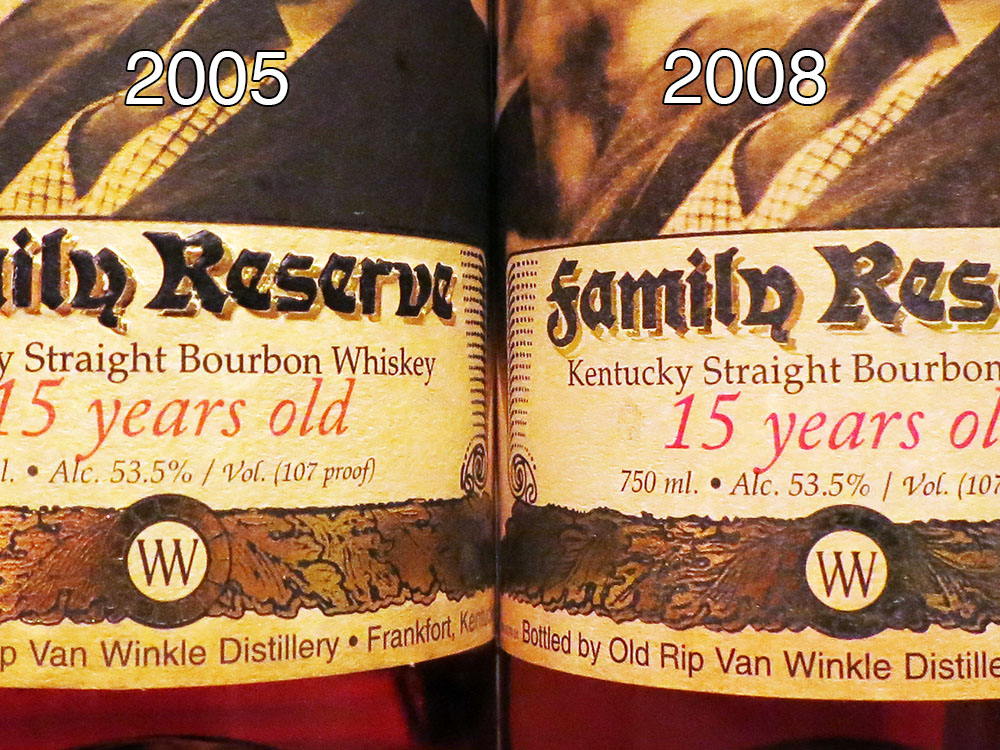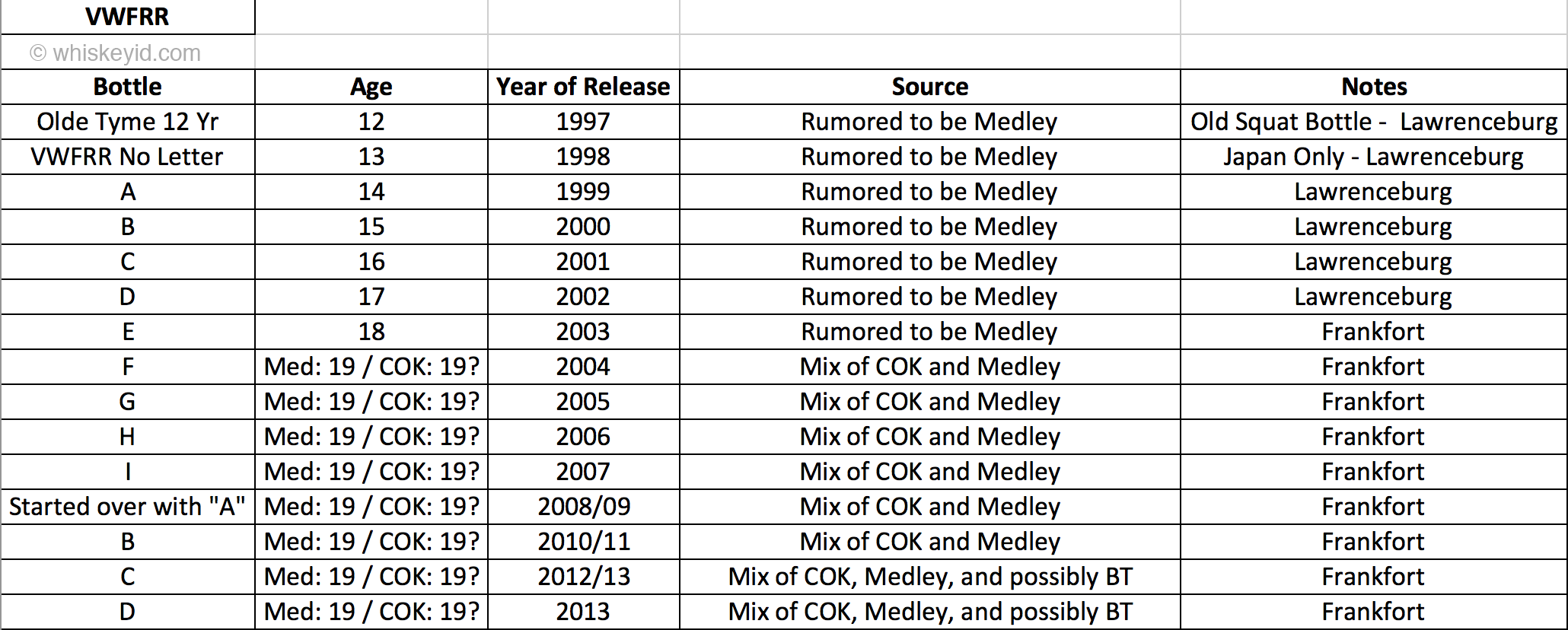History
In 1972, with the sale of Stitzel-Weller and its brands to Somerset (a subsidiary of Norton Simon), the Van Winkle family retained one pre-prohibition brand: Old Rip Van Winkle.
Julian Van Winkle II, Pappy’s son, started selling whiskey distilled at Stitzel-Weller under this brand. It was bottled for him at Stitzel weller, where he also retained an office, until his death. The focus was initially on decorative decanters, but some regular glass bottles were offered also. In 1981, When Julian II. died, his son Julian III took over. Stitzel Weller’s courtesy of bottling and holding an office didn’t extend to Julian III, so in 1983 he bought the Hoffman Distillery Lawrenceburg, KY from Ben Ripy to use for offices and its bottling line, renaming it Old Commonwealth. He continued to purchase bulk whiskey for his brand from Stitzel Weller until its closure in 1992. Julian III’s son Preston joined the company in 2001. In 2002, seeing the end of Stitzel-Weller stocks to bottle, a joint venture was created with Buffalo Trace. All stocks were transferred to Buffalo Trace’s warehouses, as was the bottling operation.
Since Stitzel-Weller stopped distilling in early 1992, it’s simple subtraction to figure out when those stocks would have started running out for the different Van Winkle bottles. Some Bernheim-distilled wheated bourbon was reportedly mingled in once the Stitzel-Weller started to run out for each expression, ultimately being replaced by wheated bourbon distilled at Buffalo Trace. To add to the confusion though, Ancient Age (Buffalo Trace’s former name) contract distilled wheated whiskey for the Stitzel Weller brands in the early 90s, so it’s possible some of that distillate has made its way into Van Winkle bottles too. Julian has stated that some Ancient Age (Buffalo Trace) distillate went into the 2006 Pappy 15 also.
Van Winkle whiskeys are largely responsible for the current bourbon boom, as they were arguably one of the first “premium” bourbon lines, and they won several awards that brought bourbon to the attention of aficionados and started to elevate its prestige and perceived quality to the level of Scotch whisky and Cognac.
The early releases of Pappy 20 and 23 year came in very light green-tinted glass bottles, and were bottled from a different source than the wheated bourbon Van Winkles have come to be known for. Also, early Pappy 23 bottles were dipped in wax rather than using foil capsules.
Date Codes
Dating Van Winkle bottles post-2007 is made relatively easy based on “laser codes” or “dot matrix codes” printed onto the bottles. These codes indicate the bottling line, date, and time the bottle was filled, but can sometimes be difficult to find and/or read. The date codes are usually printed on the back of the bottle below the label, though occasionally they’re above the label or under the label itself. A bright flashlight shining though the bottle from the other side will often aid in finding the code.
There are two versions of the date code layout, each with its own decoding schema:
Pre-2012: K2250910:22
In this example, the K = the bottling line, 225 = the 225th day of the year, 09 = the year bottled, 10:22 = the time bottled in military time.
2012 and on: B1312011:11K
Here, the B = Buffalo Trace, 13 = 2013, 120 = the 120th day of the year, 11:11 = the time bottled in military time, K = the bottling line.
Prior to 2007 Buffalo Trace wasn’t using Date codes, so it’s a little tougher. You can see the timeline for more clues.
Timeline:
-1983- Julian Van Winkle III started bottling at the Hoffman Distillery in Lawrenceburg.
-1989- Old Rip Van Winkle 15 year old was released.
-1991- Van Winkle Special Reserve Lot A was released (one release only), followed by Lot B.
-1994- Pappy Van Winkle 20 year was released in light green glass bottle, rye recipe bourbon distilled at the old Boone distillery.
-1997- Van Winkle Family Reserve Rye 13 was released, preceded by the 12-year Old Tyme Rye. Rumored to be Medley-distilled.
-1998- Pappy Van Winkle 23 year was released in light green glass and rye recipe bourbon, distilled at an undisclosed distillery.
-1999- Pappy Van Winkle expressions changed to using clear glass bottles.
-2002- With the merger, the operation moved to Buffalo Trace. Whiskey bottled prior to the move is labeled “Lawrenceburg, KY” and after the move, “Frankfort, KY.”
-2004- Old Rip Van Winkle 15 year was discontinued and replaced with Pappy Van Winkle 15 year. The letters and numbers on the ORVW15 bottles are reportedly not an indicator of bottling age. ORVW squat bottles generally have a number molded in the glass at the bottom of the bottle however. Also in 2004, the Van Winkle Family Reserve Rye was tanked after having continued to age despite being labeled as 13 year. It was rumored to have been mingled with Cream of Kentucky (Bernheim) rye. See timeline graphic below for more info.
-2005- The last regular-production wax top Pappy 23 was released, with an “A” number and Frankfort on the label.
-2007- Buffalo Trace bottling lines started using dot matrix codes on their bottles.
-2009- The 114 proof Old Rip Van Winkle 23 year decanter set was released in the fall, limited to 1200 sets.
-2010- No Pappy 15 was bottled this year. All 15 sold during 2010 was bottled in 2009.
-2012- Dot matrix code format switched to new layout. Also the 10 year/90 proof version was discontinued, leaving only the 10 year, 107 proof.
-2013- The Old Rip Van Winkle 10 year started using the tall cognac-style bottle like all the other expressions. Prior to that, ORVW 10 used the short, stout bottles. The spring release was canceled in lieu of only a larger fall release henceforth.
Other tips
There’s one other clue to the dating of Pappy Van Winkle: raised lettering on the label. The words “Pappy Van Winkle’s Family Reserve” were embossed into the label so they protruded until around 2006, when a new label style was introduced that used flat labels. You can see the difference in a side-by-side comparison of Pappy 15 from 2005 and 2008 here:
A member on Straightbourbon.com created this spreadsheet which can assist in dating older Van Winkle Rye. I’ve updated it a bit to reflect more recent releases:



